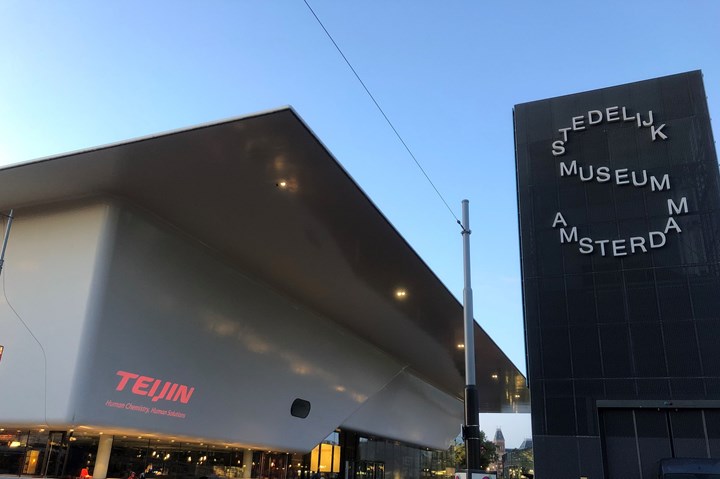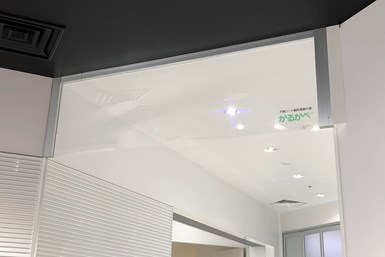Teijin contributes to sustainability with infrastructure innovations
In light of climate change and increasingly aggressive environments, Teijin focuses on new, sustainable infrastructure technologies that will enable more adaptability.

The Stedelijk Museum in Amsterdam has a façade composed of Teijin Twaron and Tenax fibers combined with a vinylester resin and PIR foam. All photo credit: Teijin Ltd.
As infrastructure is constantly facing new tasks and adaptations, Teijin Ltd. (Tokoyo, Japan) reports that it has contributed to sustainable development by providing value to solve social issues, such as safety, security and disaster mitigation solutions, particularly through infrastructure technologies which incorporate composite materials. A range of these developments are found below.
Ultralight ceiling material

Among the many hazards faced during and immediately after an earthquake, falling ceiling structures are an imminent danger. Teijin’s ultralight ceiling material is designed to do all the same things as conventional ceiling materials, at just one-tenth the weight, making it a much safer option for ceilings in earthquake-prone areas. Highly customizable and made from recycled polyester, it is used in airports, shopping malls and a variety of other facilities.
Ultralight smoke-proof hanging screen

In the aftermath of an earthquake, fire is a common occurrence. Teijin’s ultralight smoke-proof hanging screen which prevents the spread of smoke through buildings when a fire has been triggered, allows occupants a larger window of time to evacuate. According to Teijin, unlike conventional glass hanging smoke screens, its product is made from a non-combustible, shatter-proof sheet that prevents injury should it fall. With an established track record in Japan, Teijin is currently promoting this hanging screen in Taiwan, where earthquakes are relatively common.
Rainwater storage
Teijin’s rainwater reservoir is designed to protect urban areas from flooding by creating void space for water to be stored in the ground. Combining Teijin’s expertise in resin compounds and structural analysis with the rainwater storage and infiltration know-how of one of the company’s partners, the reservoir can be found in a variety of vulnerable urban locations in Japan. It has potential in markets such as Thailand, where underground reservoirs are already in common use.

Further, Teijin’s goal to make infrastructure more sustainable and more innovative progresses into what the company says are ideal solutions via reinforcing conventional materials, which are featured below.
Aramid fiber reinforcement
With its high tensile strength and heat resistance, Twaron aramid fiber is ideal for use as a reinforcement in asphalt. Twaron increases the strength and durability of asphalt surfaces, while resisting cracks and ruts, keeping roads in good condition for up to twice as long. It also allows for a thinner layer of asphalt to be used on road surfaces, saving on up-front and long-term costs. Twaron is already widely used in public paving, particularly in the U.S.
Carbon fiber reinforcement
Tenax carbon fiber is said to be immensely strong and highly adaptable. Carbon fiber laminates and sheets can be added to a range of structures, providing repairs, increasing seismic performance and adding load capacity. In Germany, Tenax carbon fiber has been used in the hangers for a new bridge which are much more durable, and also much lighter, than their conventional steel counterparts.
Related Content
-
The state of recycled carbon fiber
As the need for carbon fiber rises, can recycling fill the gap?
-
PEEK vs. PEKK vs. PAEK and continuous compression molding
Suppliers of thermoplastics and carbon fiber chime in regarding PEEK vs. PEKK, and now PAEK, as well as in-situ consolidation — the supply chain for thermoplastic tape composites continues to evolve.
-
Price, performance, protection: EV battery enclosures, Part 1
Composite technologies are growing in use as suppliers continue efforts to meet more demanding requirements for EV battery enclosures.
















